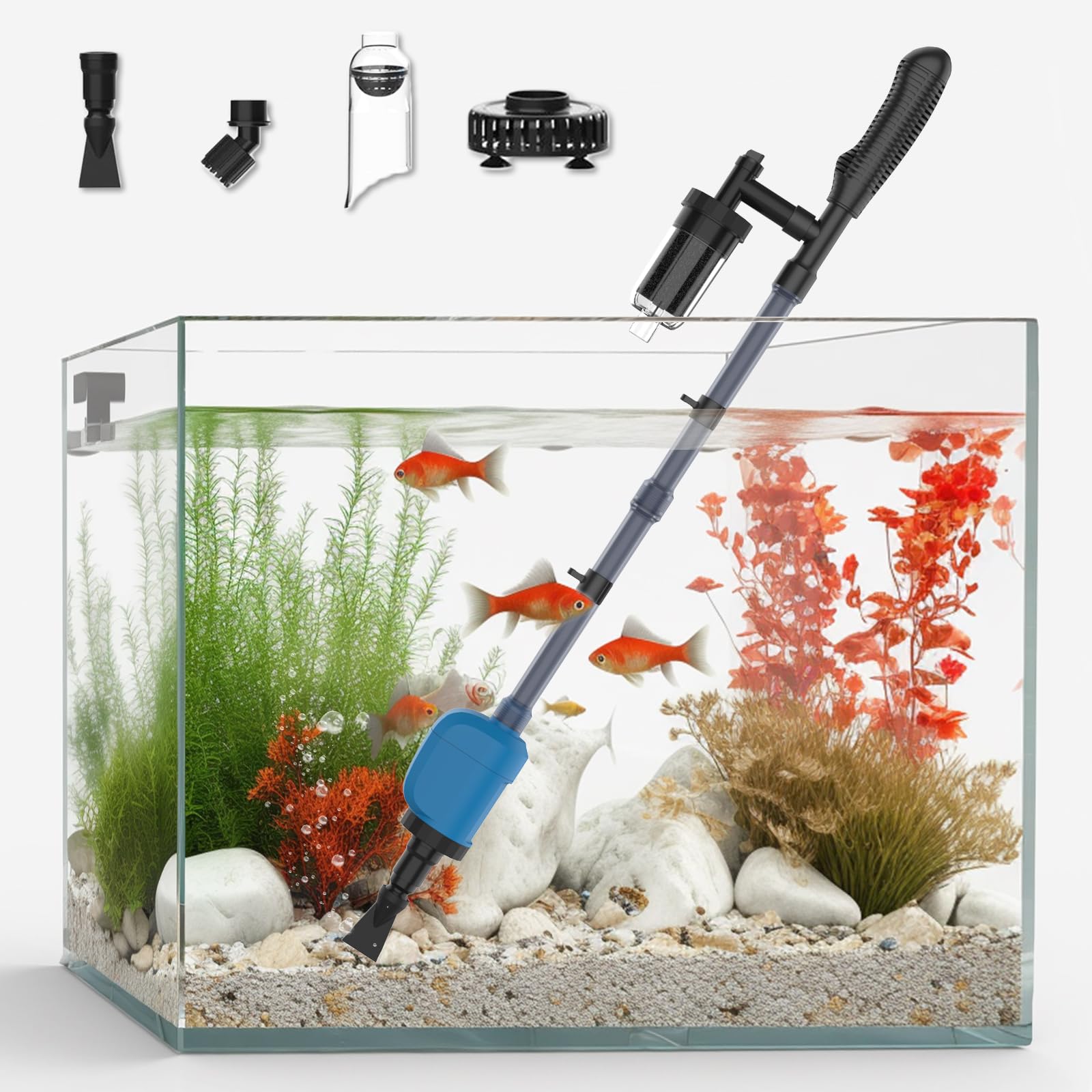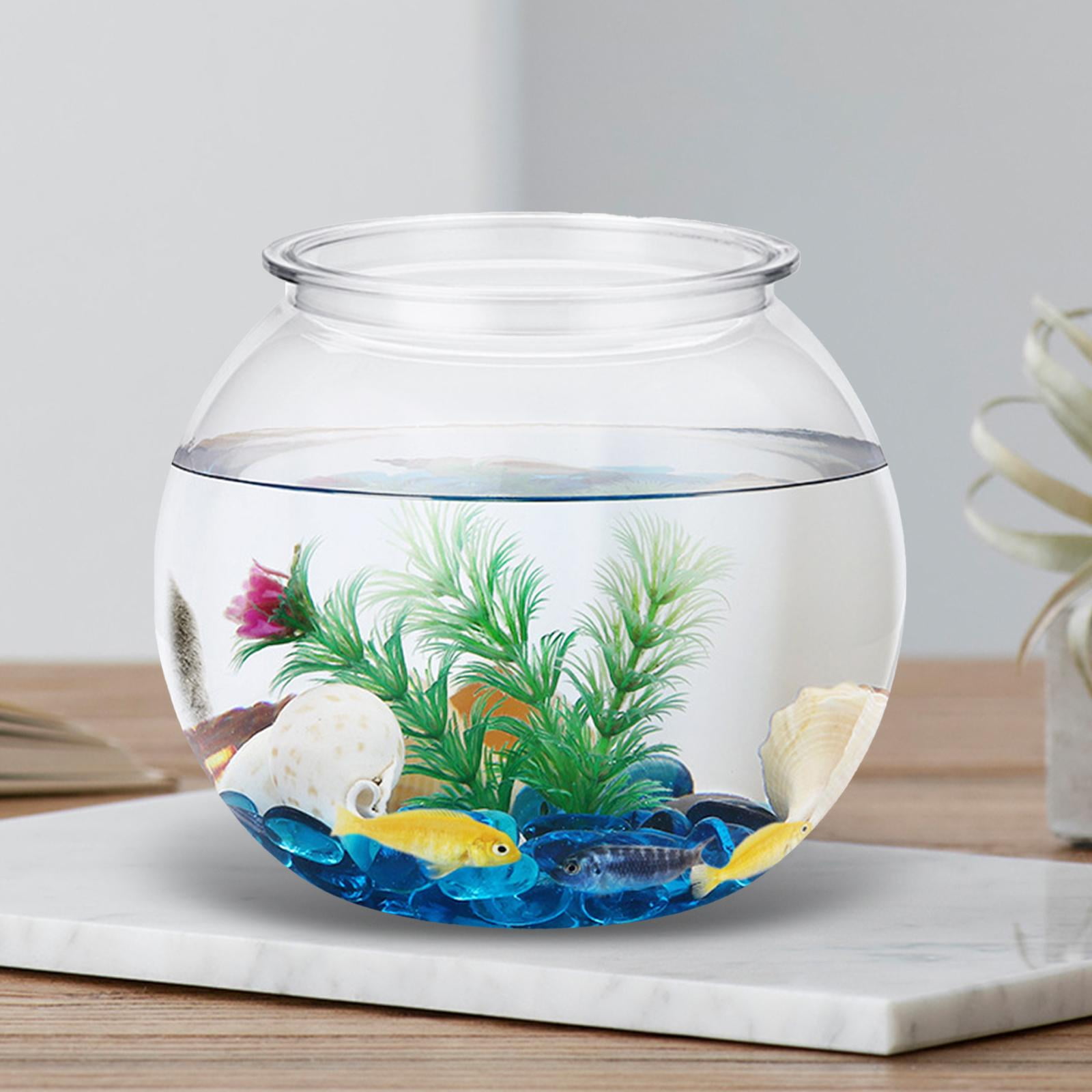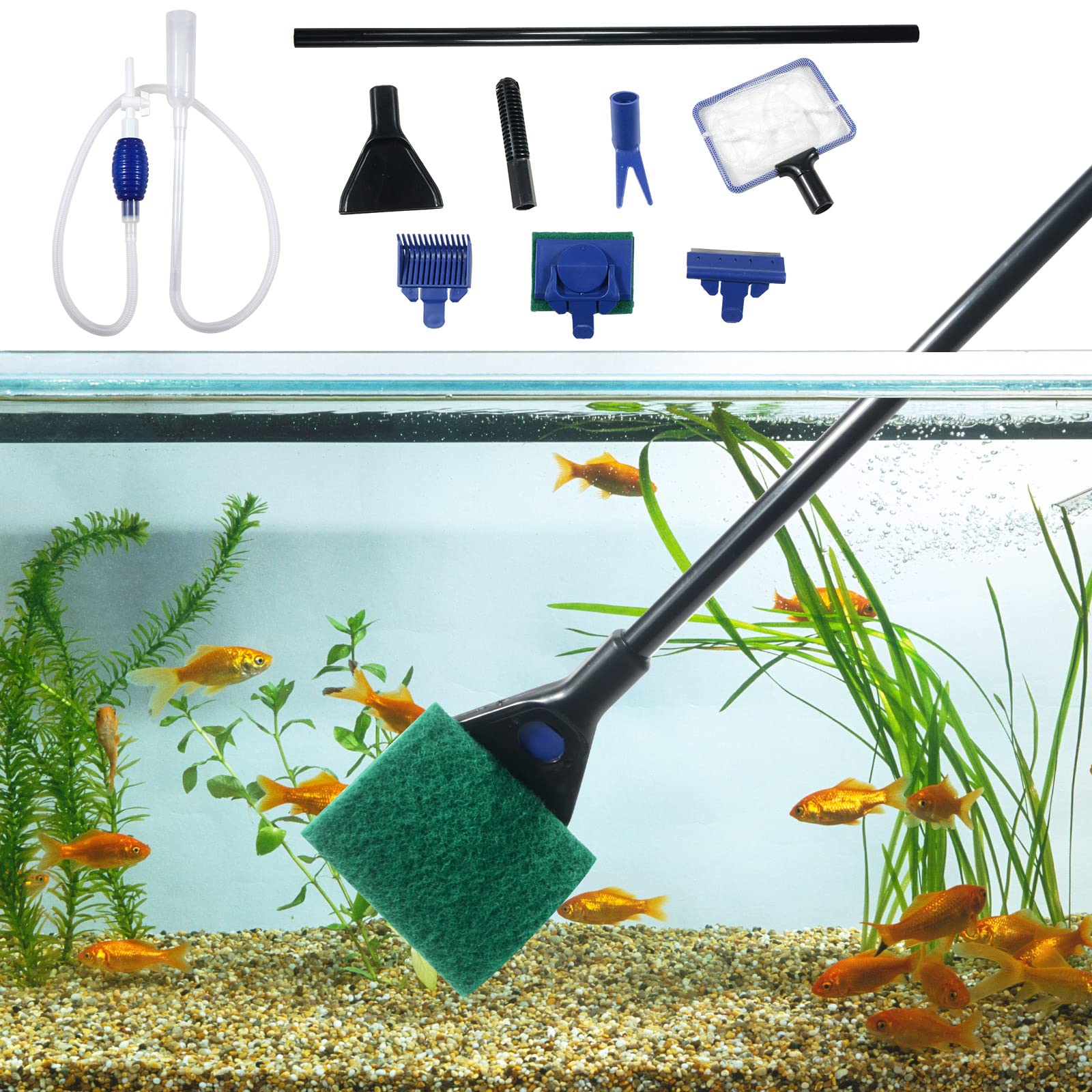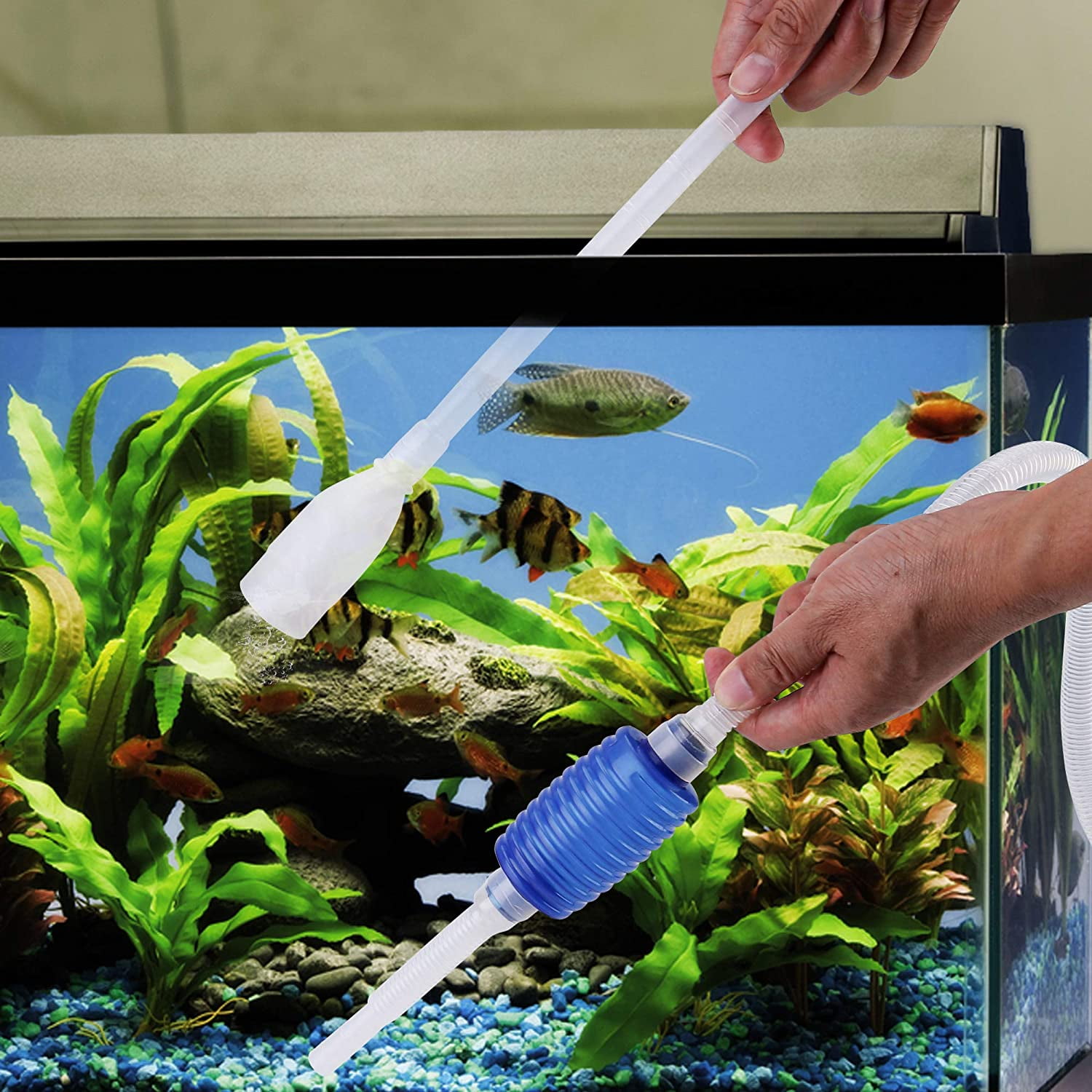Introduction: Understanding the Importance of Clean Gravel
Fish tank gravel serves not only as a decorative element but also as a crucial component of the aquarium’s ecosystem. Over time, debris, uneaten food, and waste accumulate within the gravel, leading to poor water quality and potential harm to your aquatic inhabitants. Regular cleaning of the gravel is essential for maintaining a healthy environment for your fish and plants, ensuring optimal water parameters and overall aquarium well-being.
1. Gathering the Necessary Supplies
Before you begin cleaning your fish tank gravel, gather all the necessary supplies to streamline the process. You’ll need a siphon gravel vacuum, a bucket for water disposal, a water conditioner, a water testing kit, and a scrubbing brush or algae scraper for stubborn debris. Additionally, have a designated sink or outdoor area where you can empty and clean the gravel safely without contaminating other surfaces.

2. Preparing the Aquarium Environment
To prepare the aquarium for gravel cleaning, first, turn off any equipment such as filters, heaters, and air pumps to prevent disruption or damage during the process. If you have live plants in the tank, gently remove them and place them in a separate container with aquarium water to keep them moist and protected. Ensure that any sensitive or delicate fish are also safely relocated to a temporary holding tank or container.
3. Draining Excess Water
Using the siphon gravel vacuum, begin draining excess water from the aquarium while simultaneously vacuuming the gravel. Insert the vacuum into the gravel bed and initiate the siphoning action by priming the device according to the manufacturer’s instructions. Move the vacuum nozzle throughout the substrate, making slow and deliberate passes to effectively remove debris and waste trapped within the gravel.

4. Stirring and Agitating the Gravel
As you vacuum the gravel, gently stir and agitate the substrate to dislodge trapped debris and ensure thorough cleaning. Use a gentle sweeping motion with the vacuum nozzle to target different areas of the gravel bed, paying particular attention to corners, edges, and areas with heavy accumulation of waste. Avoid disturbing the gravel excessively to prevent uprooting plants or disturbing beneficial bacteria colonies.
5. Monitoring Water Parameters
Throughout the gravel cleaning process, monitor water parameters such as temperature, pH, ammonia, nitrite, and nitrate levels to ensure the health and safety of your aquatic inhabitants. Use a reliable water testing kit to assess water quality and make any necessary adjustments or corrections to maintain optimal conditions for your fish and plants. Regular monitoring helps prevent fluctuations and ensures a stable aquarium environment.

6. Refilling and Conditioning the Water
Once you’ve completed gravel cleaning and water removal, refill the aquarium with fresh, dechlorinated water at the appropriate temperature. Add a high-quality water conditioner to neutralize any chlorine or chloramine present in the tap water and detoxify harmful heavy metals that may be harmful to aquatic life. Gradually add the conditioned water to the tank to minimize stress on your fish and maintain stable water parameters.
7. Reintroducing Fish and Plants
After refilling the aquarium, carefully reintroduce your fish and plants back into their habitat, ensuring a smooth transition and minimal stress. Acclimate your fish to the newly conditioned water by floating their container in the aquarium and gradually adding small amounts of tank water over time. Replant any live vegetation and arrange decor as desired, creating a visually appealing and enriching environment for your aquatic pets.

8. Maintenance and Routine Cleaning
To keep your fish tank gravel clean and maintain optimal water quality, establish a regular maintenance schedule that includes routine gravel cleaning and water changes. Depending on the size of your aquarium and the bio-load of your fish, aim to clean the gravel every two to four weeks to prevent debris buildup and maintain a healthy ecosystem. Consistent maintenance helps prevent algae growth, ammonia spikes, and other common aquarium issues.
9. Troubleshooting and Problem-Solving
Despite your best efforts, you may encounter occasional challenges or issues during the gravel cleaning process. If you notice cloudy water or a sudden increase in ammonia or nitrite levels after cleaning, perform a partial water change to dilute any accumulated toxins and restore water quality. Check the aquarium equipment, such as filters and pumps, for any malfunctions or blockages that may be contributing to poor water circulation or filtration. Additionally, review your feeding habits and adjust the amount of food provided to prevent overfeeding and minimize waste accumulation in the gravel.

10. Seeking Professional Advice
If you’re unsure about any aspect of cleaning fish tank gravel or encounter persistent water quality issues despite regular maintenance, don’t hesitate to seek advice from a qualified aquarium professional or experienced hobbyist. They can offer valuable insights, troubleshooting tips, and personalized recommendations based on your specific aquarium setup and inhabitants. Consulting with experts can help address underlying issues and ensure the long-term health and vitality of your aquatic environment.
11. Educating Yourself and Continuing Learning
As with any aspect of fishkeeping, ongoing education and learning play a crucial role in achieving success and mastery. Take advantage of online resources, books, forums, and local aquarium clubs to expand your knowledge, learn new techniques, and stay informed about the latest advancements in aquarium maintenance and husbandry. By continuously educating yourself and staying proactive in your approach to fishkeeping, you can enhance your skills, overcome challenges, and create an even more rewarding and fulfilling aquarium experience for yourself and your aquatic companions.
Conclusion: Promoting a Healthy Aquarium Ecosystem
In conclusion, cleaning fish tank gravel is a crucial aspect of maintaining a healthy and thriving aquarium ecosystem. By following these comprehensive steps and guidelines, you can effectively remove debris, waste, and harmful substances from the substrate, ensuring optimal water quality and overall aquarium well-being. Regular gravel cleaning, combined with proper water conditioning and routine maintenance, promotes a clean, clear, and balanced environment for your fish and plants to thrive and flourish. So, roll up your sleeves, gather your supplies, and embark on the journey to cleaner gravel and a happier, healthier aquarium for all your aquatic inhabitants to enjoy. With dedication, patience, and a commitment to excellence, you can enjoy the rewards of a clean gravel substrate and a flourishing underwater world for years to come.










